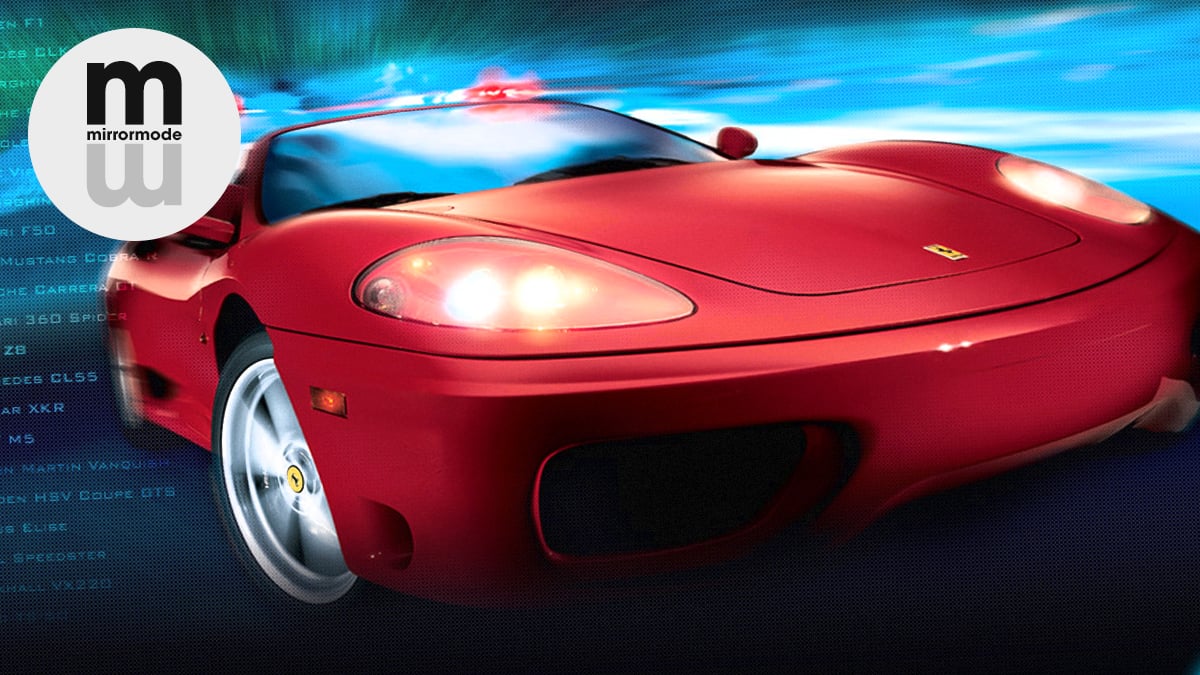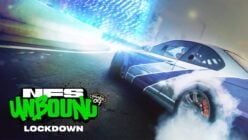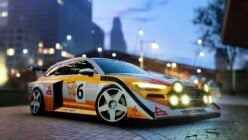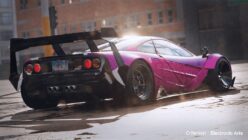Welcome to Mirror Mode, GTPlanet’s series that shines a spotlight on retro racing games. To commemorate the upcoming release of Need for Speed Payback, we’re revisiting one of franchise’s most iconic installments.
A Cannonball Run-style cross-country odyssey. Several undercover cop dramas. A shameless Fast and Furious clone. Two semi-realistic spinoffs, and a rally tie-in nobody remembers. Need for Speed has worn many different hats over its two decade-plus history.
For that reason, it’s probably more appropriate to describe gaming’s longest-running active racing franchise as less of a series, and more of an anthology. Need for Speed is a constantly-changing reflection of whatever modern day car culture happens to be at any given time.
Sometimes, that leads to some strange one-offs and experiments, like 2007’s oft-derided ProStreet, or the progenitor of Project CARS, Need for Speed Shift. But it’d be unfair to reduce those entries to mere footnotes in the timeline. They define Need for Speed as properly as any other, because Need for Speed has no single identity. It can be anything — so long as it involves cars and driving fast.
However, it wasn’t always this way. After six years of iterative releases, beginning with the very first game launching on the tragic 3DO console of all places, and culminating with Porsche Unleashed in 2000, Need for Speed was in a rut. Electronic Arts more or less annualized the franchise, with each successive installment bringing less to the table than the last.
But before Underground would revolutionize things with a renewed focus on street racing, EA gave the supercar showdown formula one last go with 2002’s Need for Speed: Hot Pursuit 2. A reprise of sorts of the third game, Hot Pursuit 2 was the culmination of the series’ best ideas, and all the advancements afforded by the new generation of consoles.
What It Got Right
Just a few weeks past its 15th birthday, Hot Pursuit 2 stands as the purest expression of the early years of Need for Speed, and — depending on where you played it — one of the finest arcade racers ever made.
Allow me to elaborate on that caveat. With Hot Pursuit 2, Electronic Arts took the franchise to home consoles other than PlayStation for the first time since the original, all the way back in 1995. But there were stark differences between the versions: namely, the PlayStation 2 release, versus the game that appeared on Xbox, GameCube, and PC.
The version for Sony’s system was developed by BlackBox Games, which would go on to head up the franchise before EA shuttered it after releasing Need for Speed: The Run in 2012. The other ports were handled by the also-defunct EA Seattle, which primarily concentrated on the PC versions of previous Need for Speed games.
As such, Hot Pursuit 2 for Xbox, GameCube, and Windows plays much like its PC predecessors — floaty, a little slow, and rather drab, though most of the content remains intact.
The PS2 version, though? It’s a different beast entirely.
The handling is mercifully sharper and much more nuanced, with an optional “Extreme” physics mode that dials up the oversteer. The visuals were overhauled and teeming with increased detail, despite the underpowered Sony hardware. PS2 players even got some platform-exclusive bonuses for their troubles, in the form of three desert-themed tracks.
Speaking of which, the one consistency between all flavors of Hot Pursuit 2 is epic track design. Each circuit or point-to-point course — of which there are 15 total in the PS2 version — is rife with alternate paths of varying length and difficulty. They’re not all shortcuts, which makes exploring the intricacies each environment critical.
Some tracks are also remarkably lengthy, especially toward the end of the game. The longest is Tropical Circuit — a 13-mile Hawaiian Nordschleife that winds through villages, volcanoes, waterfalls, and a major city.
And those 13 miles feel considerably longer once you have the Five-O bearing down your back. By the nature of the title alone, you can surmise Hot Pursuit 2 wasn’t the first arcade racer with police chases. But it was far and away the best, and set the example for all other racing games to follow and repeatedly fail against.
The cops have an arsenal of equipment to take you down, from nitrous-powered interceptors to roadblocks, spike strips, and even bouncing explosive barrels. They’ll try and nail you on your back tires to spin you around — this was the game that taught a generation of would-be drivers what the PIT manuever is — and hover over you in helicopters when all else fails.
Because there’s no open-world map, the chases don’t stretch for quite as long as they do in later games, and you don’t have the same kind of freedom in terms of how you make your escape. But they’re still thrilling, challenging, and refreshingly simple. Unlike 2010’s Hot Pursuit reboot, racers don’t have an assortment of gimmicky weapons, like EMPs and radar jammers, to fight back at the police. They’re at a disadvantage, as they should be.
And then there’s the car roster. Early Need for Speed games were known for a small but well-curated selection of the latest supercars and concepts. Hot Pursuit 2’s stable is decidedly less imaginitative — you won’t find craziness like the Ford GT90 or Alfa Romeo Scighera here — but it is a solid representation of the greatest production sports cars available at the time, including series mainstays like the McLaren F1 and Mercedes CLK-GTR. Though there are a few notable absences, like the Enzo Ferrari and second-generation Dodge Viper, which would have been just revealed at the time.
What it Got Wrong
Hot Pursuit 2’s strengths lie in its impeccable gameplay, sense of speed, and tremedously fun skirmishes with the authorities. But off the track, there’s not much to hold your attention.
The campaign is split into two event trees of about 30 races each: one where you race with cops, and another without. In the PS2 version, you accumulate points depending on how well you perform, and automatically unlock new cars and tracks once you’ve reached certain thresholds. The other ports offer a twist, as points are treated more like currency that you can choose to spend however you like. Either way, if you loved the customization and varied event types in Underground and Most Wanted, you’ll probably find the grind wears quick as you revisit the same tracks for increasingly longer races over and over again.
Where it Stands
Exciting as they were at the time, many of the early Need for Speed titles haven’t aged well. Hot Pursuit 2 is different. The PS2 version specifically is arcade racing perfection, crafted with the kind of polish the genre rarely sees anymore.
The intro made my 9-year-old jaw drop back in 2002, and still gives me goosebumps today. The soundtrack, dated as the licensed tunes may have been, contained a handful of fantastic original techno tracks from the likes of Rom Di Prisco, Matt Ragan, and The Humble Brothers, who lent their talents to a number of other EA products. And the showcase mode, featuring brief explainers on every car from a man who sounds like he may have narrated a few James Bond trailers, is a charming reminder of the series’ Road & Track-sponsored roots.
Amidst all of this, it’s disappointing to think that a sizable portion of gamers unknowingly missed out on the best version. Discrepancies between ports weren’t uncommon back in the ’90s, but there was much more parity between platforms by the time Hot Pursuit 2 launched. Yet here EA was, shipping two completely different games, running on completely different engines, with an egregious gulf in quality. It’s theorized that the PS2’s dated architecture in comparison to the GameCube’s PowerPC and Xbox’s x86 PC-derived systems necessitated the rift, but we’ll likely never know the true answer.
Nevertheless, Hot Pursuit 2 remains a glorious sendoff to Need for Speed as it once was. For some, the series never ascended to such heights again, despite Criterion Games’ admirable attempt to recapture the magic seven years ago. If you want to experience the pre-street racing days at their best, look no further.
See more articles on Mirror Mode and retro gaming.











